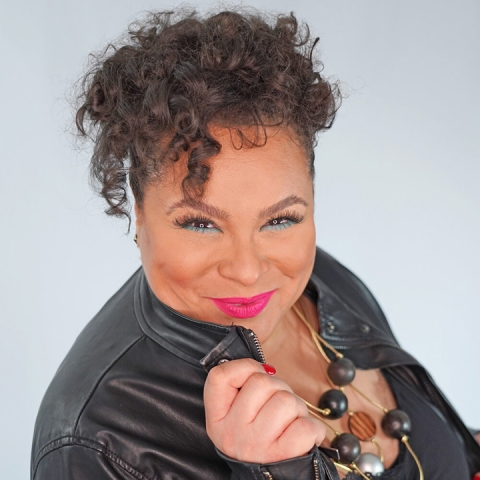New Carsey-Wolf Center initiative shines a light on influence, impact of Black artists
The historical action-epic “The Woman King” is a Black female-led film centered on a Black female-led army, the Agojie, who fought for the West African kingdom of Dahomey in the 1800s. Based on reviews and on box office receipts, it’s a huge hit. That the movie was nonetheless shut out of Oscar nominations speaks to “the consistent chasm between Black excellence and recognition,” director Gina Prince-Blythewood recently stated in The Hollywood Reporter.
That chasm and how to shrink it are at the heart of Black Hollywood, a new programming focus at UC Santa Barbara’s Carsey-Wolf Center (CWC), which will launch Tuesday, Feb. 28, with a screening of “The Woman King” at Pollock Theater. The film will be followed by a conversation between series curator Mireille Miller-Young, an associate professor of feminist studies, and production designer Akin McKenzie. (The event is free and open to the public but advance registration is required.)
“Black artists, writers, performers and directors have been central to the Hollywood industry from the beginning,” said Miller-Young, a renowned scholar of race, gender and sexuality in U.S. film and popular culture, “but we rarely see their art centered in public or academic film criticism.
“A figure like Akin McKenzie is a perfect example of how Black creatives are reshaping and redefining the look of contemporary Hollywood cinema,” she added. “I am thrilled to discuss his work on ‘The Woman King,’ which recreates the African kingdom of Dahomey as it existed long before the advent of modern photography and film, allowing audiences to imagine an African past in a more richly visual and historically accurate way than ever before.”
As a programming initiative, Black Hollywood takes a similar tack, according to Patrice Petro, Dick Wolf Director of the CWC: “to showcase the rich and varied contributions that Black creators have made to the Hollywood canon since its very earliest days.”
“Black creators have been fundamental to the Hollywood media industries from the very inception, working as cinematographers, writers, directors, performers, composers and business managers, helping to shape in concrete and lasting ways the now globally dominant Hollywood style,” Petro said. “Nonetheless, these contributions have long been either overlooked or actively repressed by a predominantly white industry establishment. As a result, Black stories have been given short shrift, Black performers have found themselves shunted into often highly problematic supporting/peripheral roles, and Black aesthetic innovation has gone uncredited. Not only do these many forms of racist repression uphold and extend racial injustice in the media industries; left unaddressed, they also severely constrain and undermine our shared understanding of film history.
“As an organization,” she continued, “the Carsey-Wolf Center is dedicated to supporting teaching, learning and research about film, media and television in an expansive, comparative frame. We cannot meet this mission if we accept a version of ‘Hollywood history’ that excludes, whether by force or simple omission, some of its leading innovators. Black Hollywood, then, builds on and aims to contribute to ongoing efforts to address racial injustice, anti-Blackness and discrimination in the media industries, even as it helps us to build a fuller and more robust vision of film and media studies as a discipline.”
It made perfect sense, Petro said, to develop such a series in partnership with Miller-Young, who has led many conversations at CWC about the politics of representation, diversity in the media industries, and the contributions of Black artists and creators to U.S. film and TV culture. Black Hollywood serves, in one sense, to highlight Miller-Young’s own contributions, and to “provide a platform for cutting edge questions, conversations and tools for media professionals, academics and the wider public.”
Indeed, Black Hollywood aims to innovate new academic research and public-facing engagement projects focusing on the work of Black creators and technicians, as well as the histories of Black artists and stories. The series also joins a number of recent efforts to “more fully account for and celebrate the remarkable contributions of Black artists to the industry and aesthetic practice we call Hollywood.
“Black Hollywood builds on these contributions while creating new, accessible opportunities for our campus community to experience the many ways that Black artists are shaping the look and feel of contemporary Hollywood,” Petro said, “even as they transform the industry behind the scenes, going beyond questions of on-screen representation to address matters of equity in labor practices, media democratization and more.”
Shelly Leachman
805-893-2191
shelly.leachman@ucsb.edu



